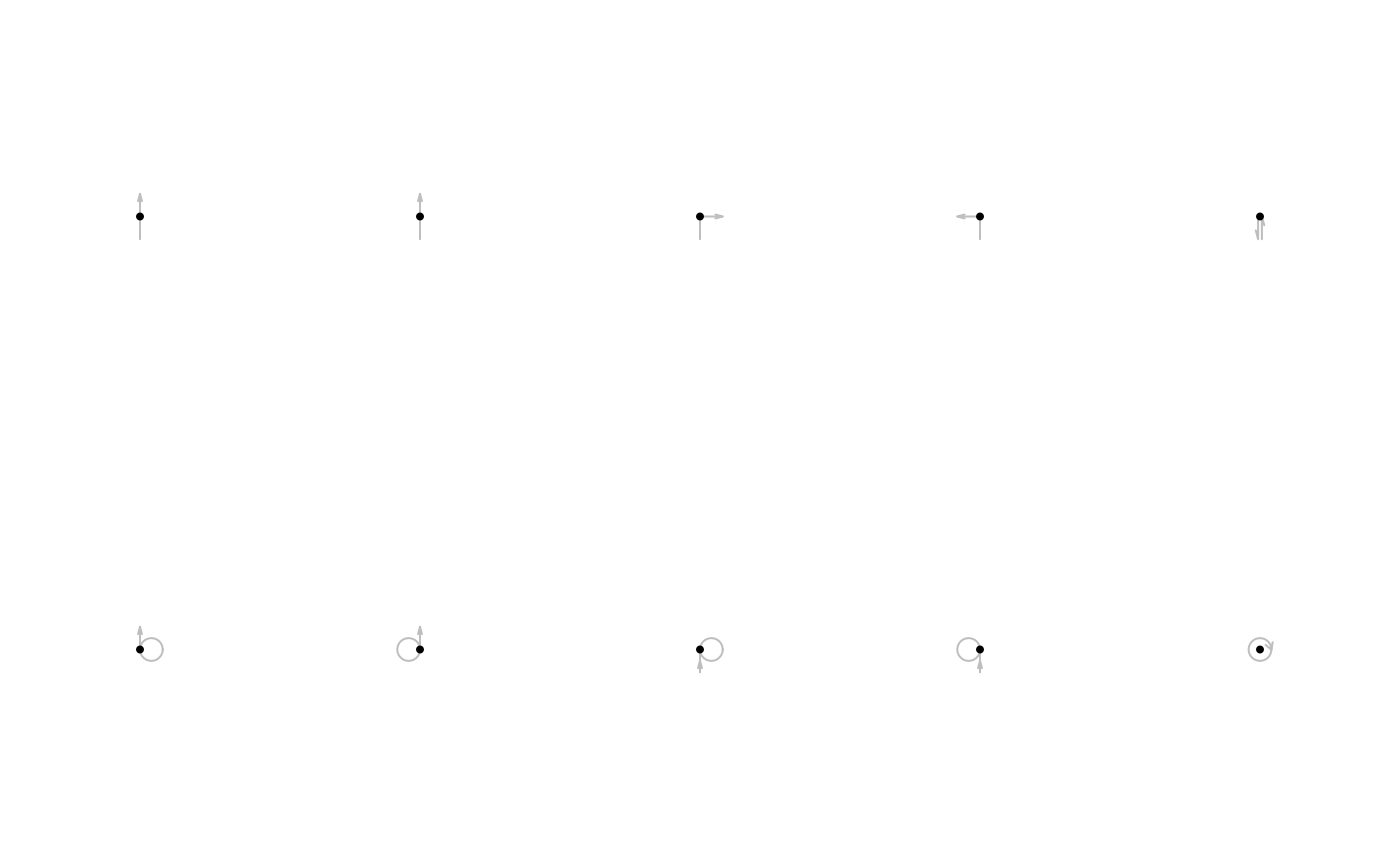A list of pre-defined base patterns. See the Examples section.
Format
An object of class sfc_base of length 1.
An object of class sfc_base of length 1.
An object of class sfc_base of length 1.
An object of class sfc_base of length 1.
An object of class sfc_base of length 1.
An object of class sfc_base of length 1.
An object of class sfc_base of length 1.
An object of class sfc_base of length 1.
An object of class sfc_base of length 1.
An object of class sfc_base of length 1.
An object of class list of length 10.
Details
BASE_I and BASE_J are identical. They are only used to distinguish the two
"going forward" patterns for the level-1 units with 11/22 corner values, i.e. bottom-left to top-right, and bottom-right
to top-left.
Examples
BASE_I
#> Base: I, with 90 degrees in and 90 degrees out.
BASE_J
#> Base: J, with 90 degrees in and 90 degrees out.
BASE_R
#> Base: R, with 90 degrees in and 0 degrees out.
BASE_L
#> Base: L, with 90 degrees in and 180 degrees out.
BASE_U
#> Base: U, with 90 degrees in and 270 degrees out.
BASE_B
#> Base: B, with in-closed and 90 degrees out.
BASE_D
#> Base: D, with in-closed and 90 degrees out.
BASE_P
#> Base: P, with 90 degrees in and out-closed.
BASE_Q
#> Base: Q, with 90 degrees in and out-closed.
BASE_C
#> Base: C, self-closed.
draw_multiple_curves(
BASE_I, BASE_J, BASE_R, BASE_L, BASE_U,
BASE_B, BASE_D, BASE_P, BASE_Q, BASE_C,
nrow = 2
)
